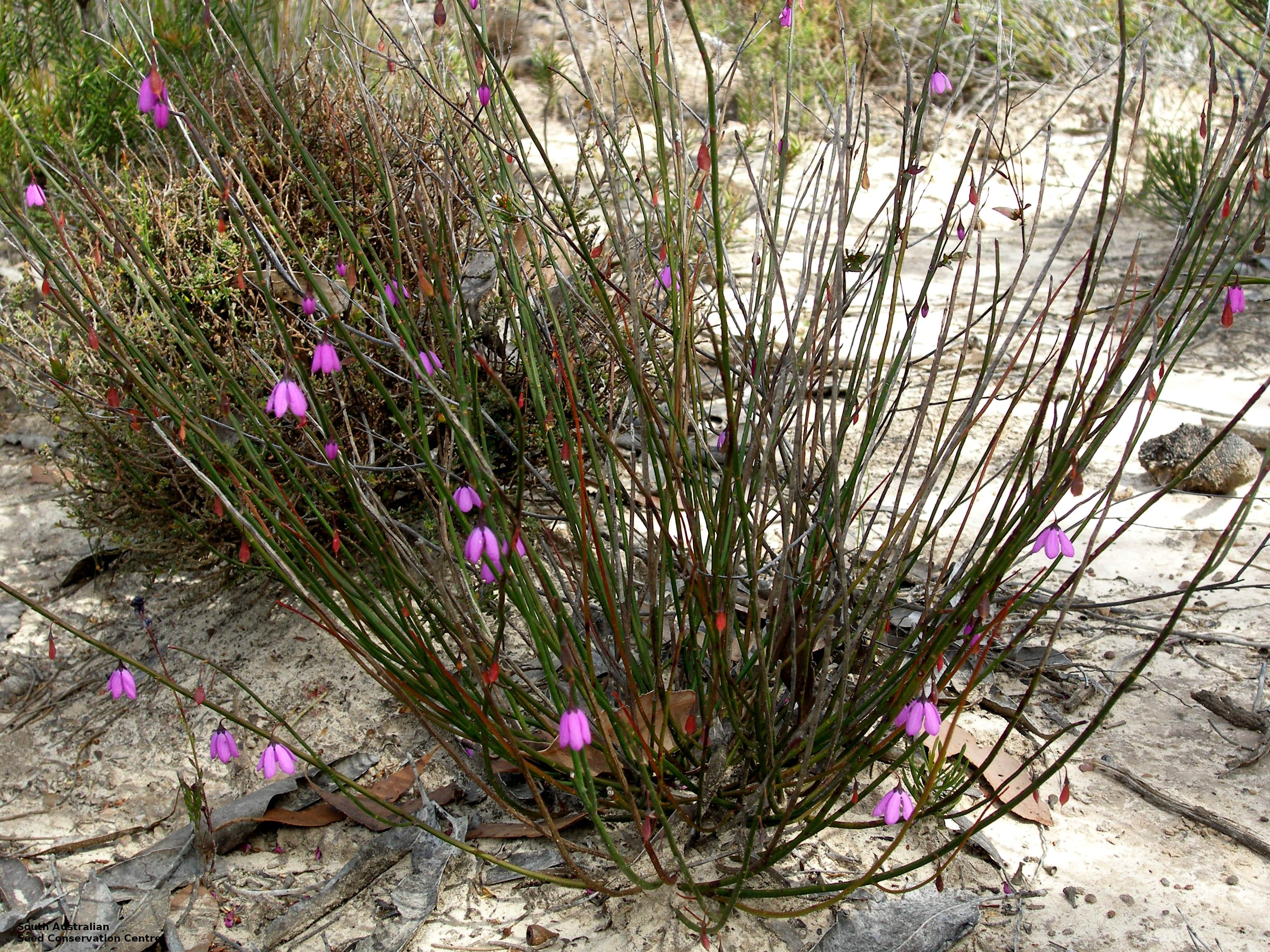
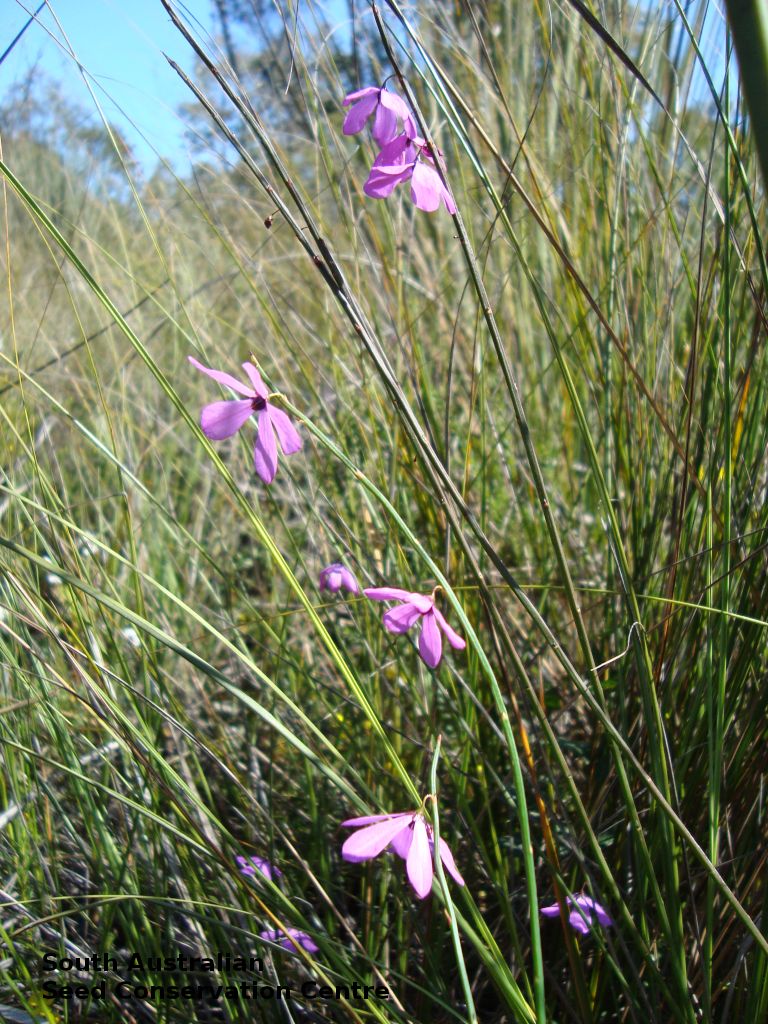
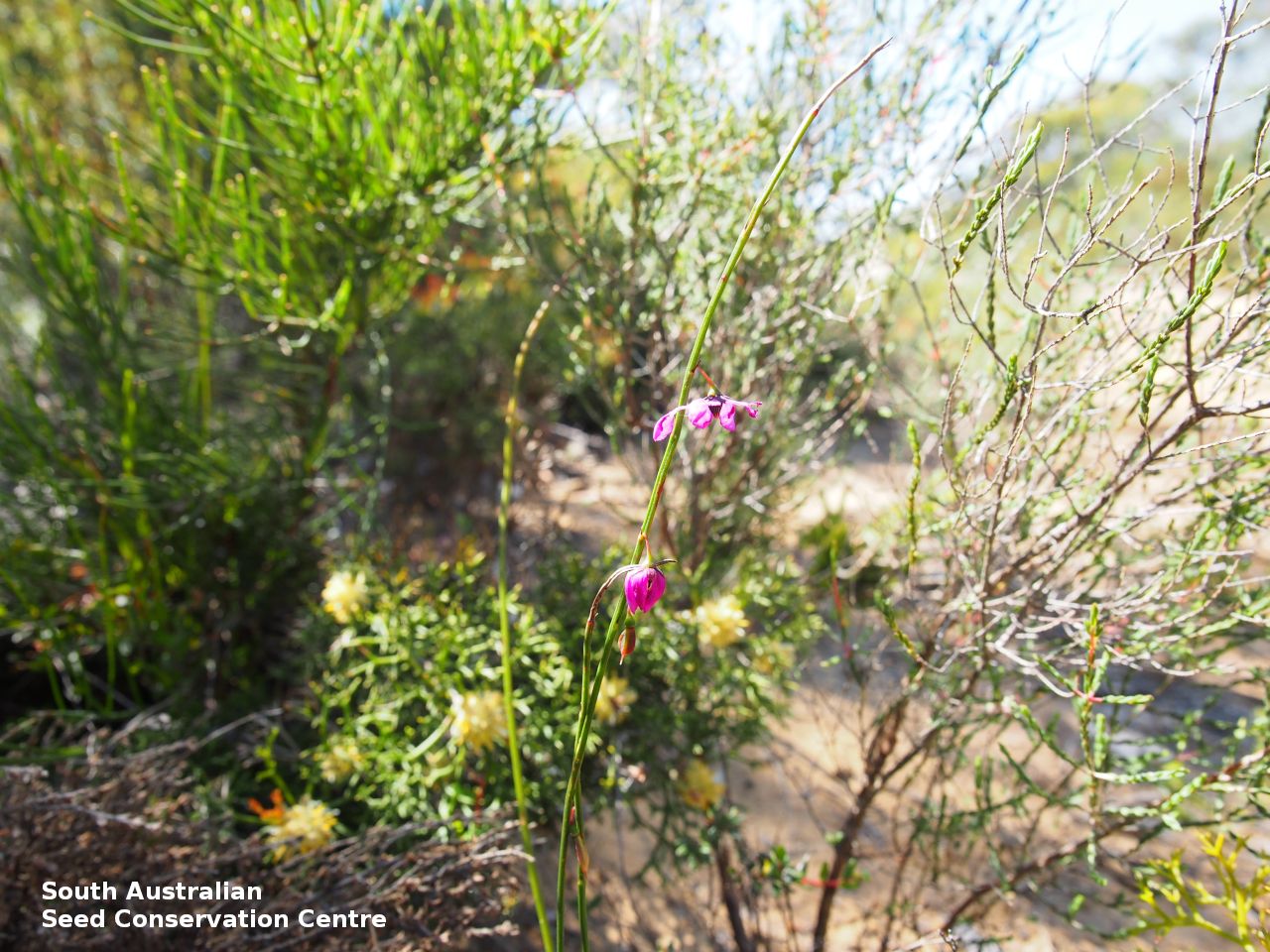
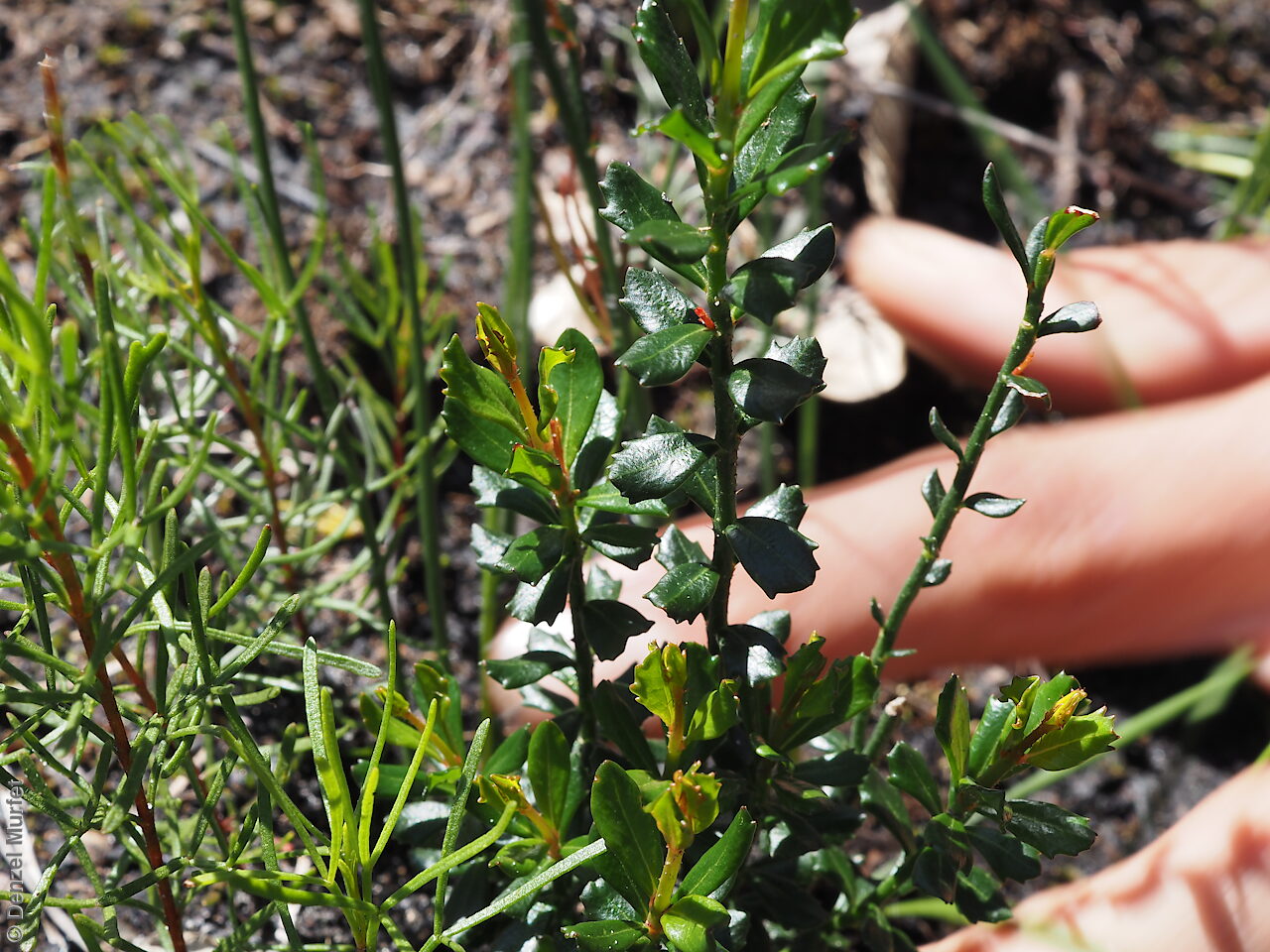
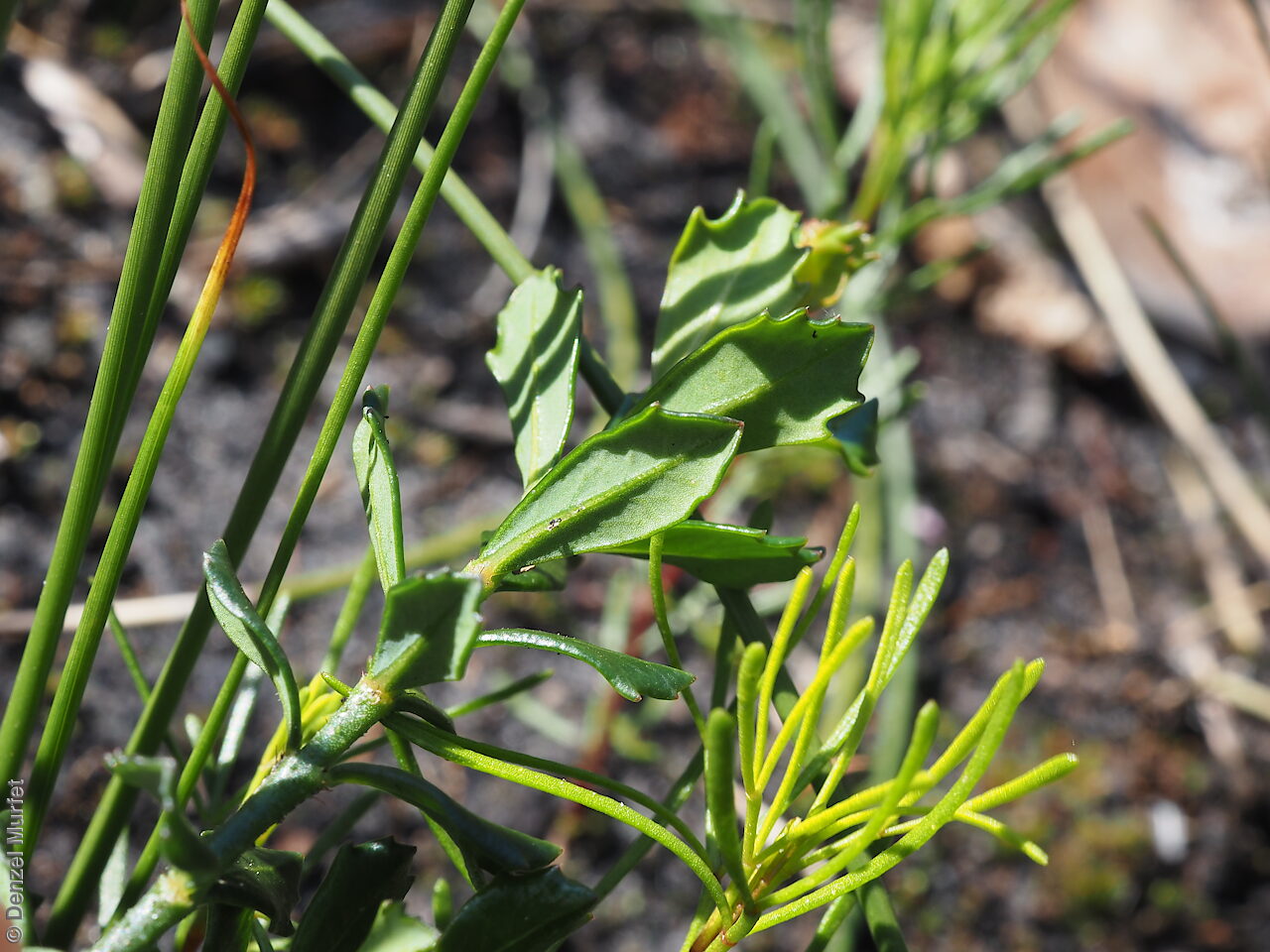
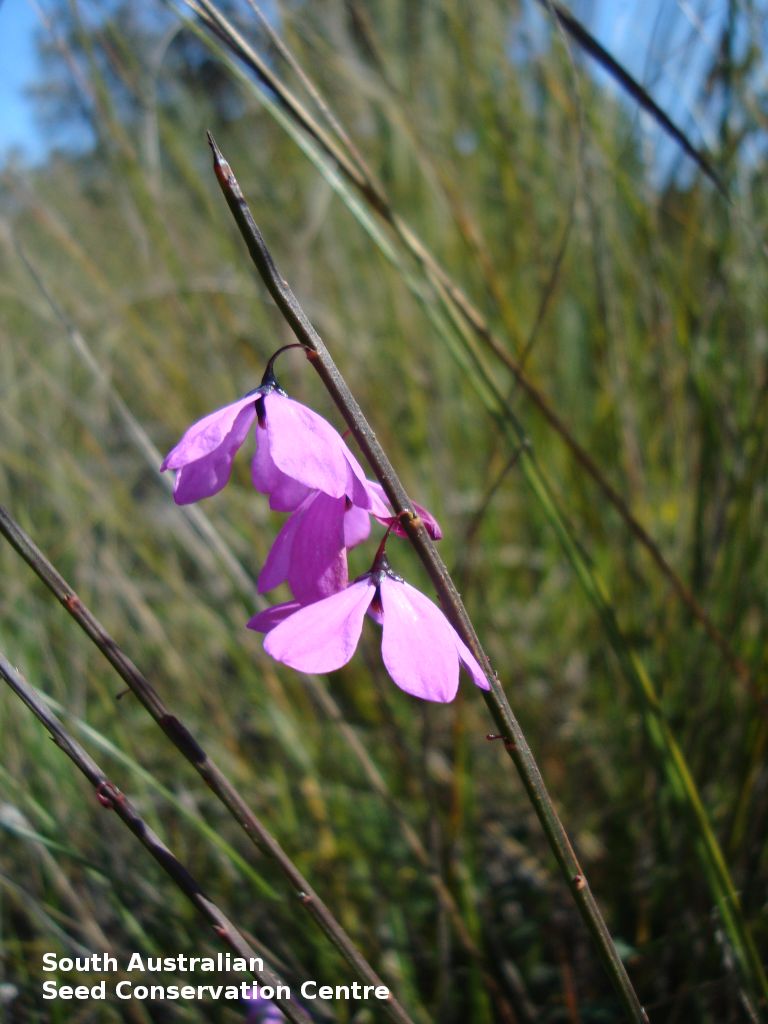
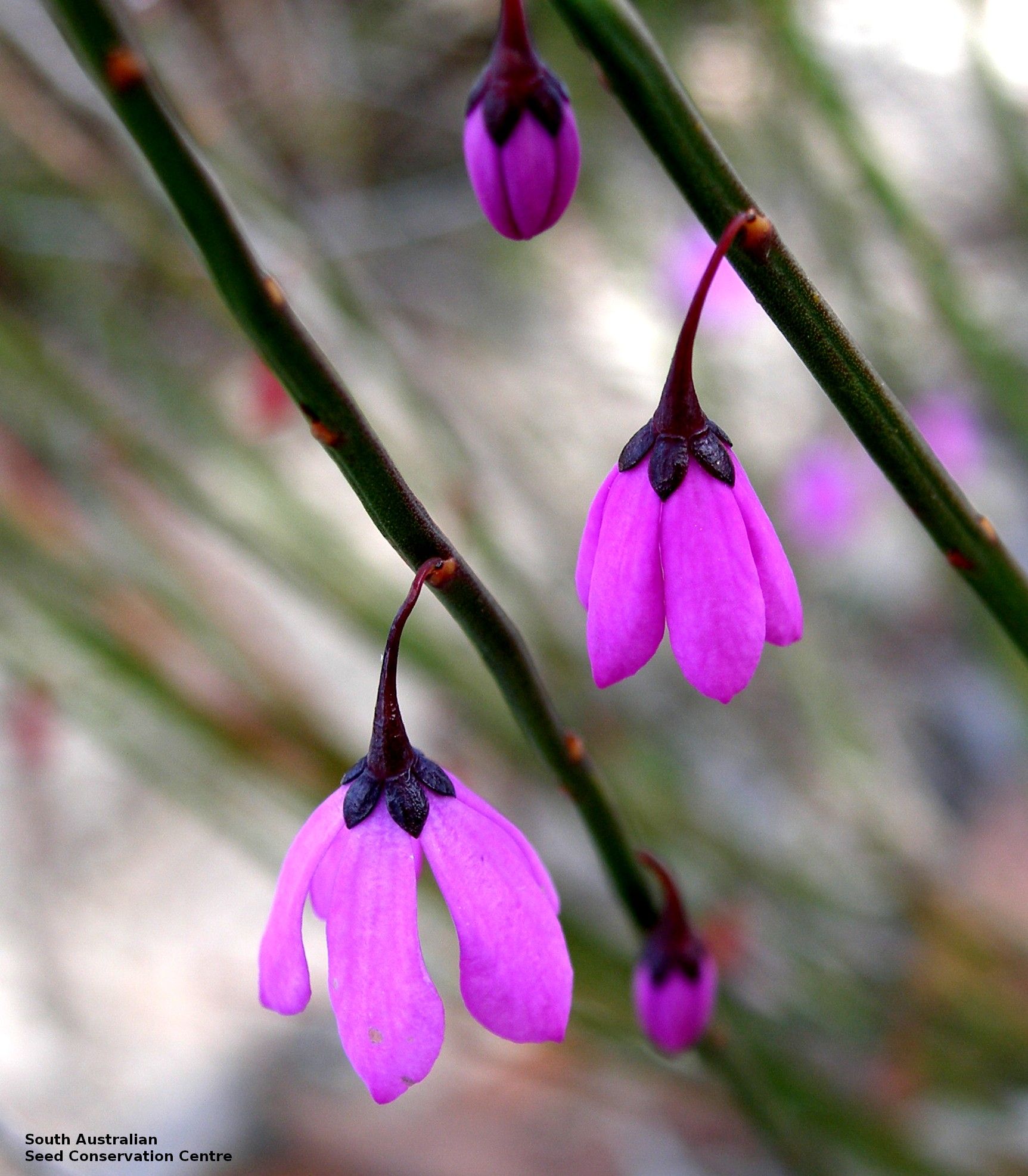
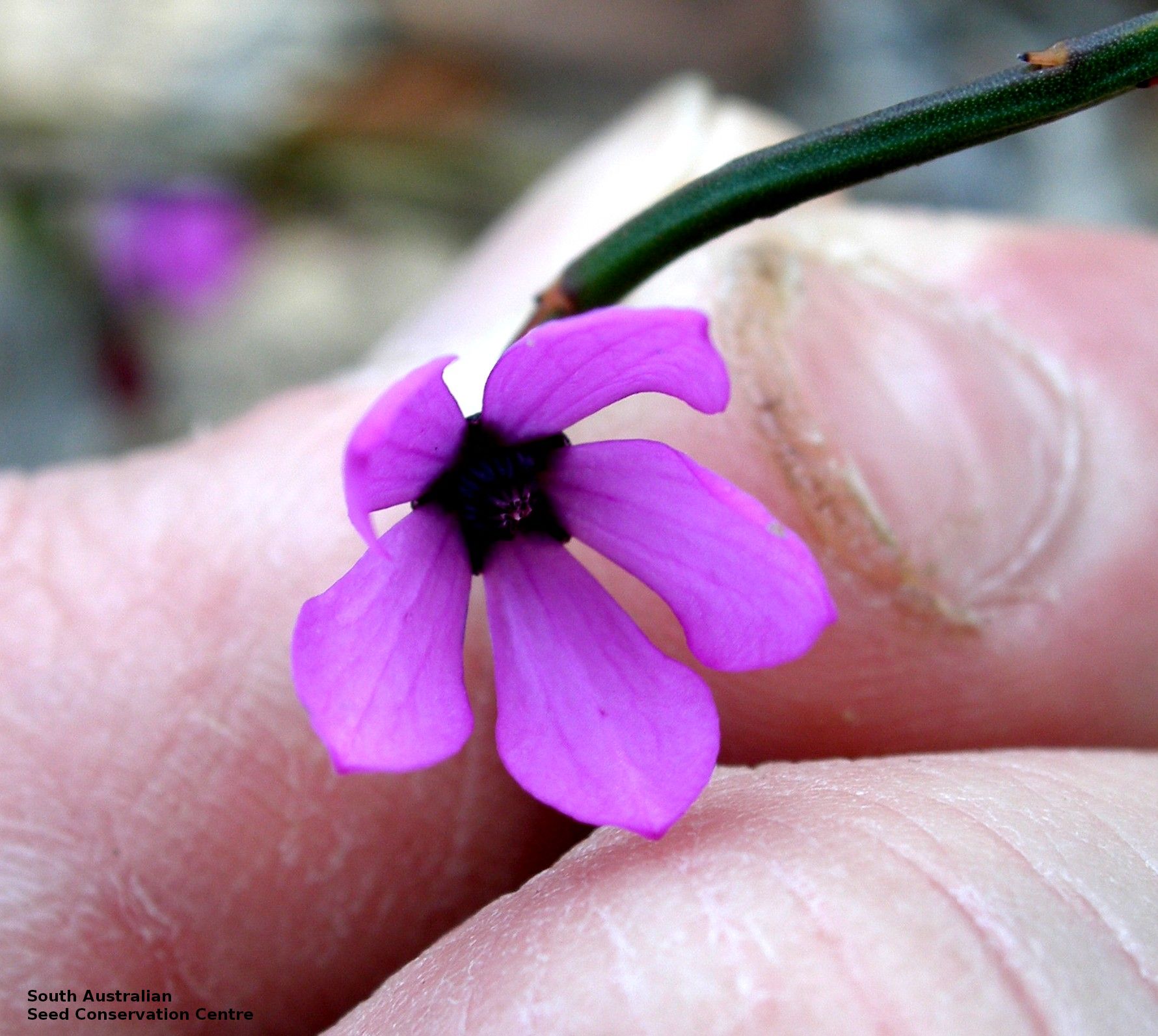
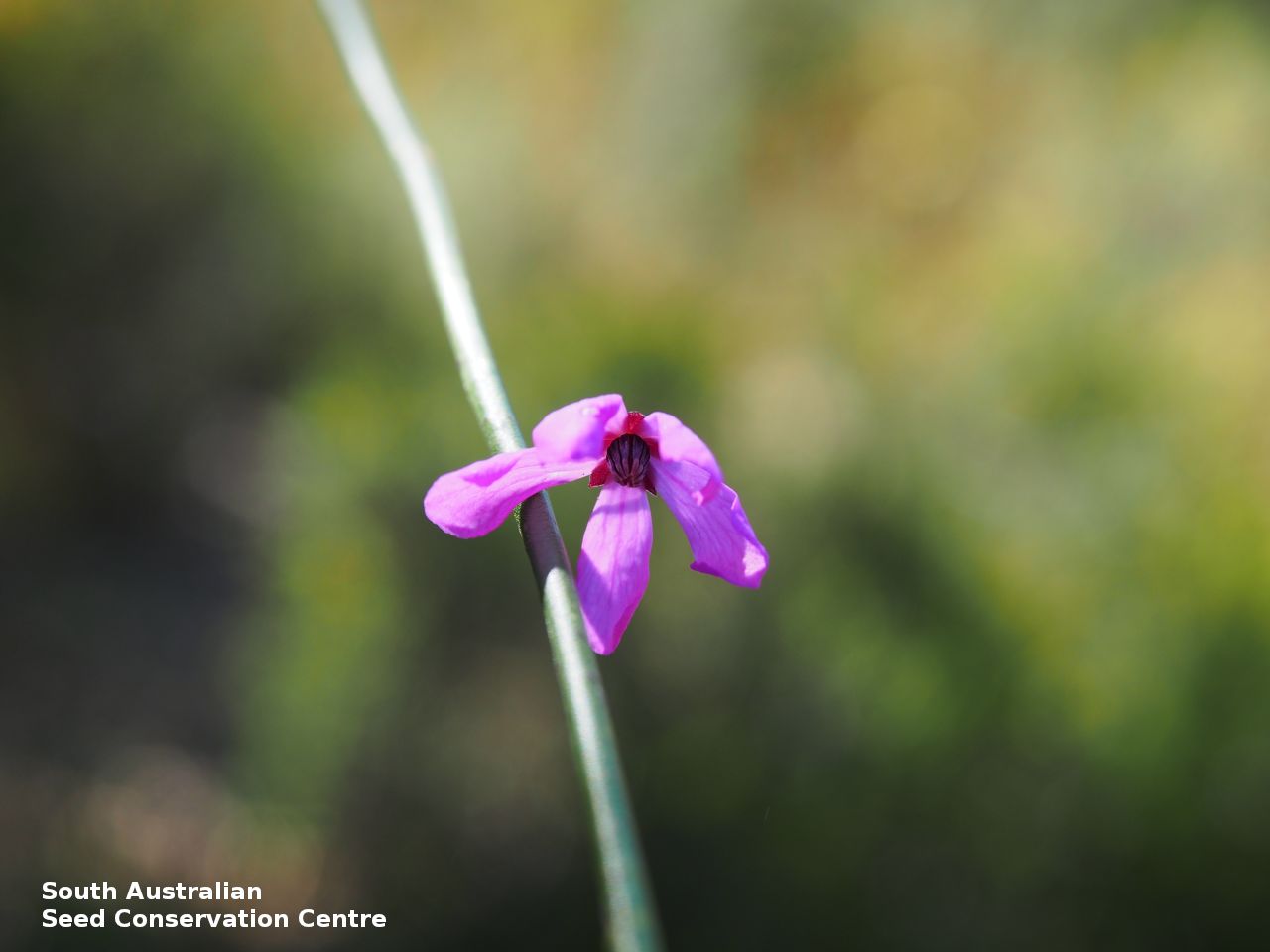
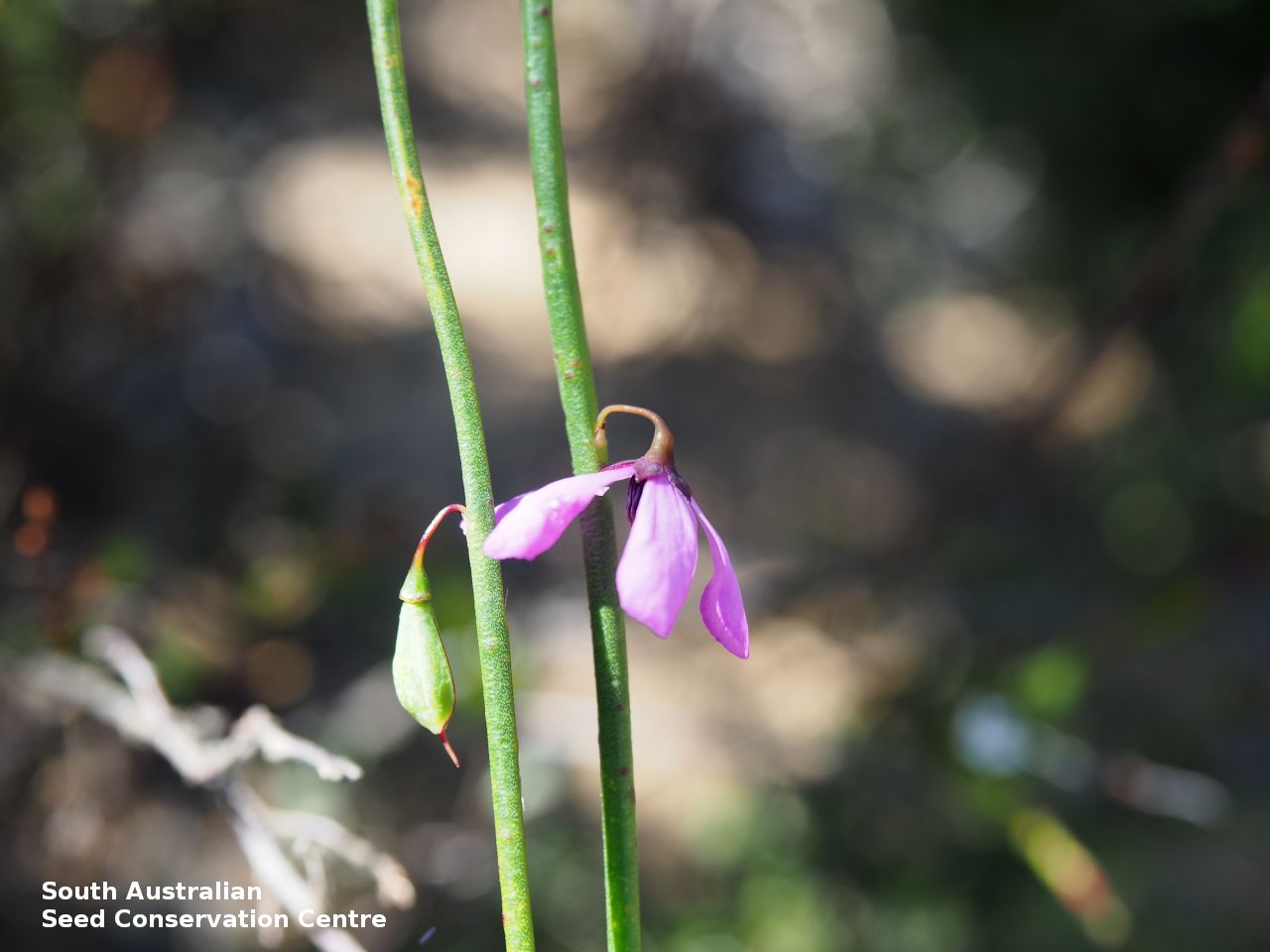
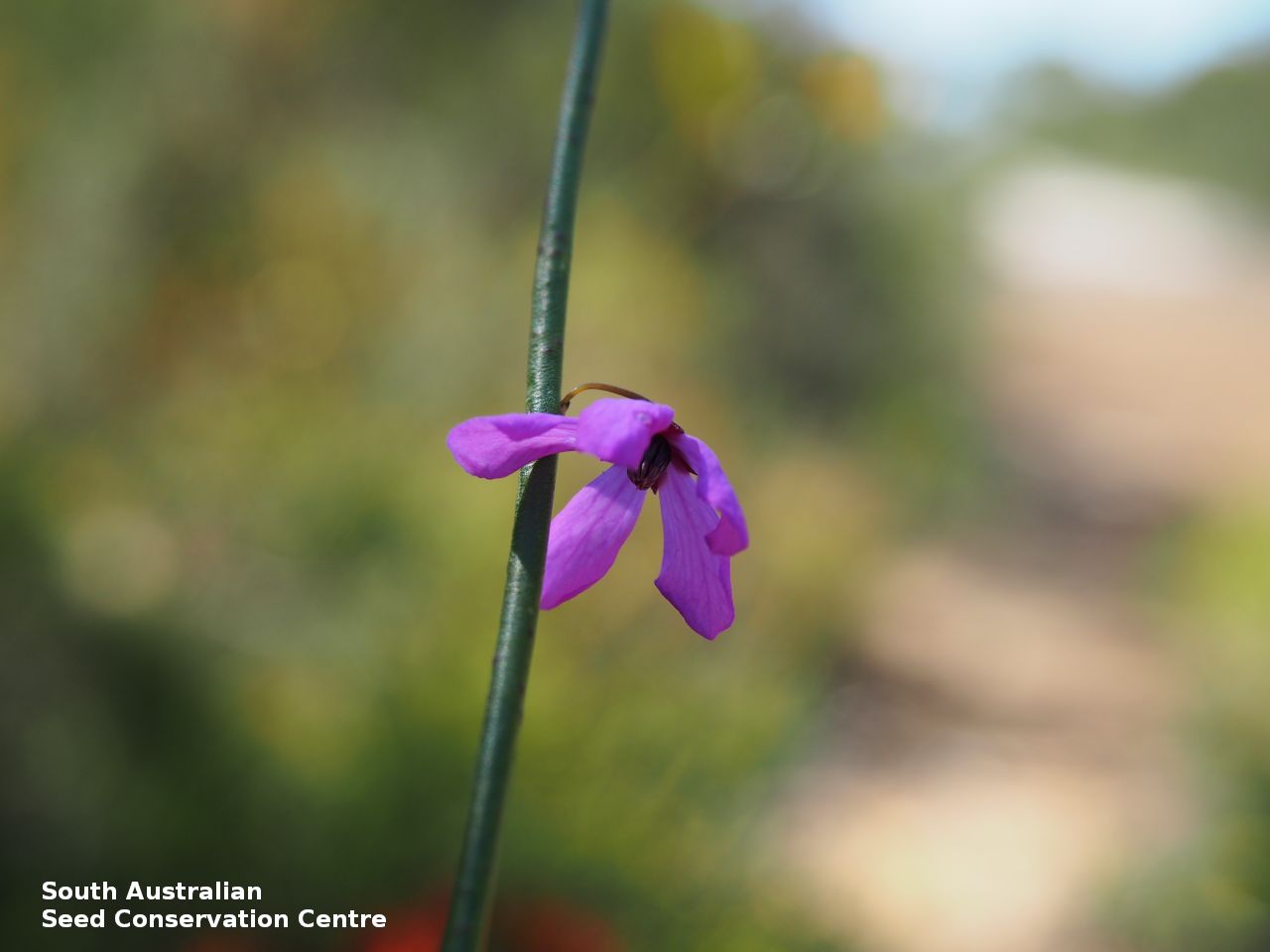
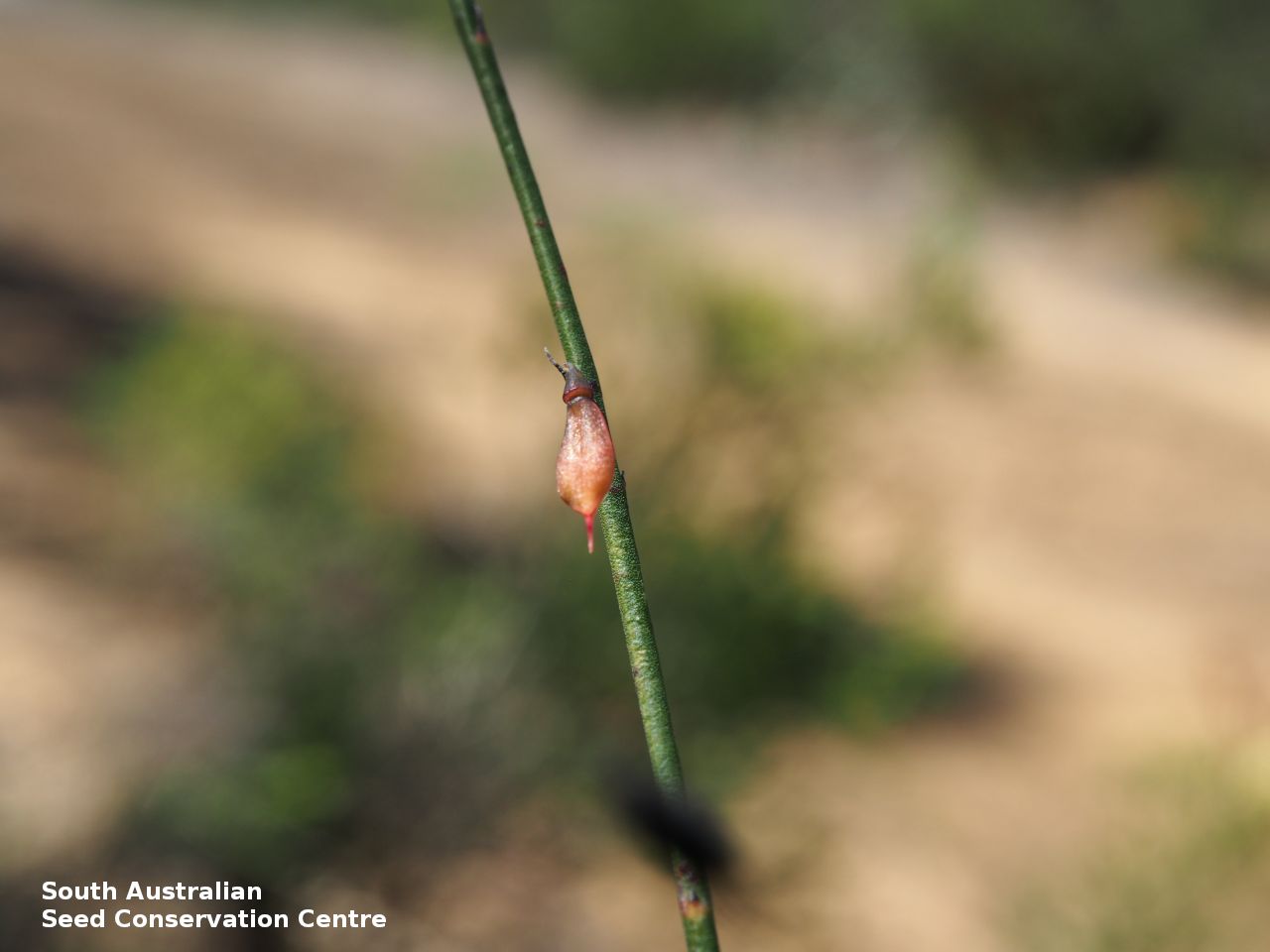
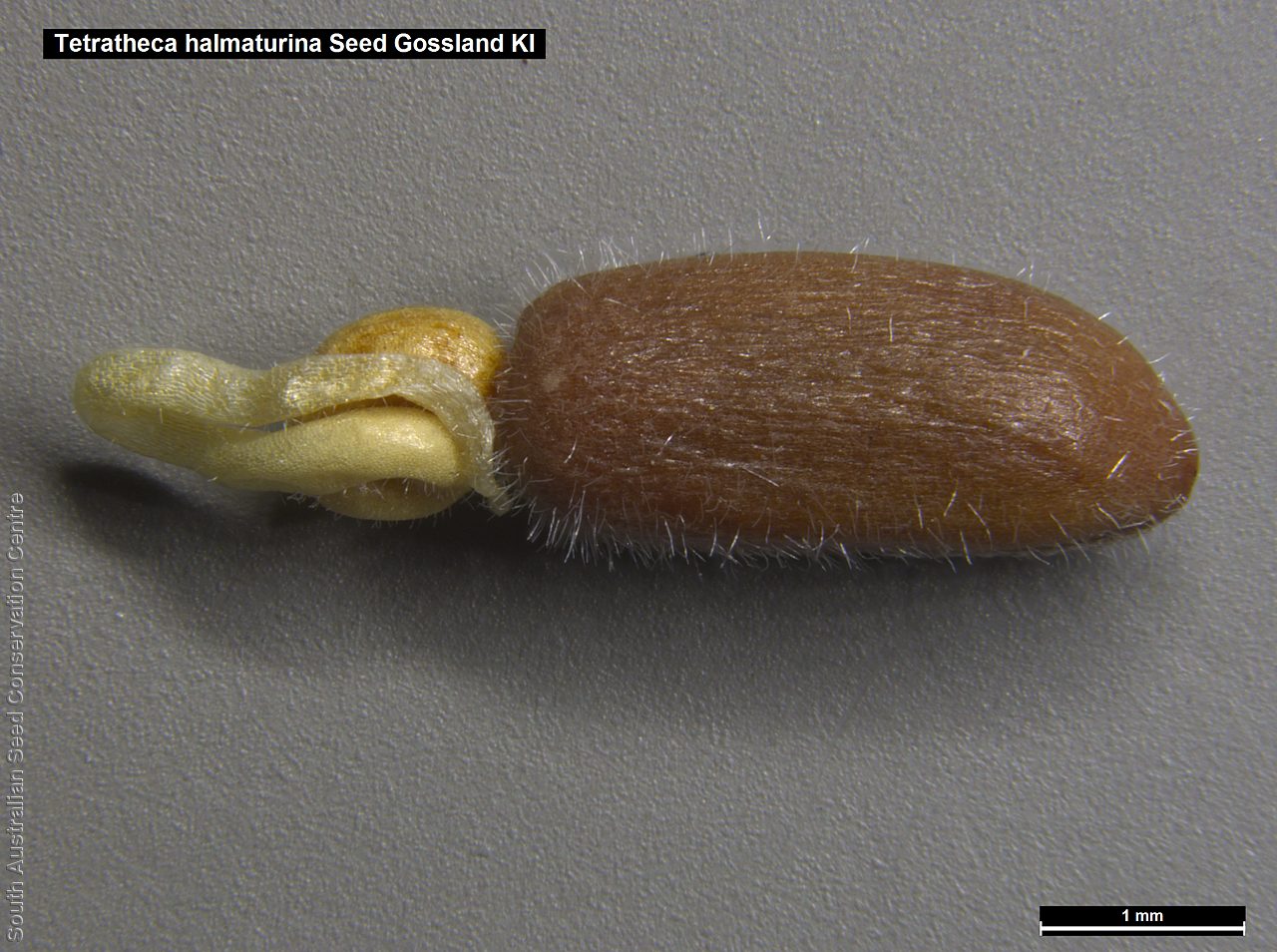
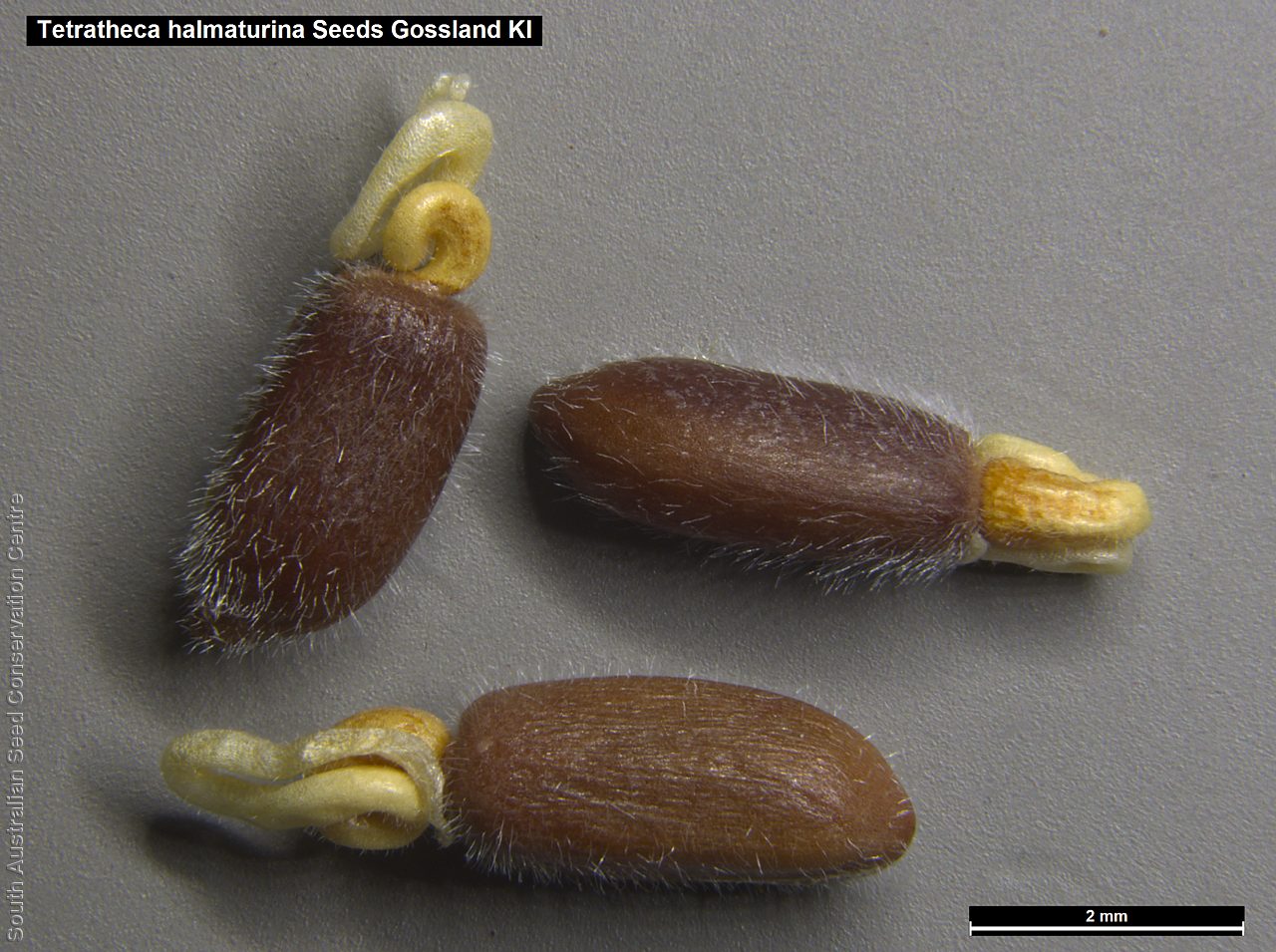


Botanical art
Prior names
Tetratheca ericifolia var. aphylla, nom.illeg.
Common names
Curly Pink-bells
Leafless Kangaroo Island Tetratheca
Etymology
Tetratheca from the Greek 'tetra' meaning four; and 'theke' meaning case; referring to the 4 anther-loculi, the anthers are often four-lobed or four-celled. Halmaturina is derived from Halmaturus, a generic name once applied to kangaroos, and is from the Greek 'halme' meaning a leap or bound, and commonly used as an epithet for species from Kangaroo Island.
Distribution and status
Endemic to South Australia and found only on Kangaroo Island. Native. Common in South Australia.
Herbarium region: Kangaroo Island
NRM region: Kangaroo Island
AVH map: SA distribution map (external link)
Plant description
Compact almost leafless shrub to 50 cm high, usually branching above and close to the rootstock, stems stout with many small tubercules and occasional larger ones. Leaves alternate, mostly reduced to narrow deltoid green scales usually with the lamina withered leaving the short broad base of the petiole. Inflorescence single or in pairs in leaf axils on the upper branches, with dark-pink, rarely white bell-shaped flowers, sepals 5, petals usually 5, stamens usually 10, body of the anther glabrous or with minute protuberances, tapering to a tube with a narrow orifice, ovary glabrous or with scattered hairs. Flowering between July to December. Fruits are brown narrow ovoid capsule to 8 mm long and 4 mm wide, usually shortly beaked. Seeds are light brown cylindrical seed to 3.7 mm long and 1.7 mm wide, covered in scattered hairs and with a large cream appendage.
Seed collection and propagation
Collect seeds between October and January. Collect maturing capsules those that are fat, turning a pale brown and contain hard dark seeds. Place the capsules in a tray and leave to dry for a week. Then rub the dried capsules gently by hand to dislodge the seeds. Use a sieve to separate the unwanted material. Store the seeds with a desiccant such as dried silica beads or dry rice, in an air tight container in a cool and dry place.